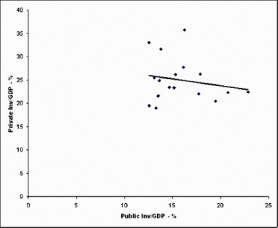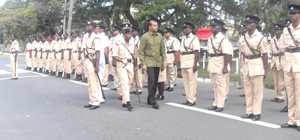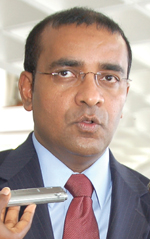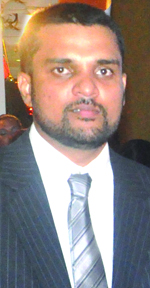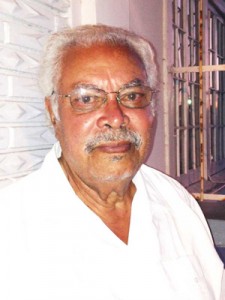Show-of-Hands, Secret Ballots and the making of an Elected Oligarchy
Posted By Tarron Khemraj On February 9, 2011 @ 5:02 am In Daily,Features |
Introduction
Recently there have been open debates between senior members of the ruling PPP. Mr. Ramkarran, the respected House Speaker, is in support of a secret ballot to determine the next Presidential Candidate of the PPP. President Jagdeo, however, does not like the idea of a secret ballot, but would prefer that the members of the Central Executive Committee of the PPP show their hands when voting for the next candidate. This is a curious position to take by the President who was elected by secret ballot.
One might ask why is the President keen to have members show their hands when voting for the future Presidential Candidate. The answer to this lies somewhere in the series of Development Watch columns I wrote on elected oligarchy. If a leader is going to control the economic space in Guyana then he must maintain control over the executive members of the PPP party, which after winning the national election is able to govern under a Burnham Constitution.
This internal party control must be fortified before the leader accedes to the national stage to enjoy Forbes Burnham’s Constitution. The internal control takes the form of generous pay packages and privileges for the family members of the leadership of the PPP. Therefore, the show-of-hands is a control mechanism intended to allow the President to select his candidate. In essence, then, this control system is at the heart of the making of the Guyanese oligarchy. The prize is to win the election in order to enjoy the luxury of non-transparency that comes with the Burnham Constitution. Once the party leader is armed with the Burnham Constitution, he can now control the economic space by showering tax payers’ monies to chosen friends and families.
Key Features of the Oligarchy
 The elected oligarchy comes into being by the following chain of events. First, Democratic Centralism allows the a few individuals in the PPP to select a Presidential Candidate who is then presented to the party mass supporters and the nation as a whole (this is the reason why the President wants the method of show- of-hands over that of secret ballots. Second, given the entrenched ethnic voting patterns, the Candidate is likely to win the national election and therefore enjoy the immunities of the mildly tinkered 1980 Burnham Constitution. Third, this Candidate then surrounds himself with chosen like-minded individuals. Fourth, generous State sponsored incentives (using the monies of the people) are then offered to chosen members of the business class. This allows the elected oligarchy to control the economic space in Guyana. Some members of the oligarchy will eventually reach the point of buying out media assets to further dominate the society and public views.
The elected oligarchy comes into being by the following chain of events. First, Democratic Centralism allows the a few individuals in the PPP to select a Presidential Candidate who is then presented to the party mass supporters and the nation as a whole (this is the reason why the President wants the method of show- of-hands over that of secret ballots. Second, given the entrenched ethnic voting patterns, the Candidate is likely to win the national election and therefore enjoy the immunities of the mildly tinkered 1980 Burnham Constitution. Third, this Candidate then surrounds himself with chosen like-minded individuals. Fourth, generous State sponsored incentives (using the monies of the people) are then offered to chosen members of the business class. This allows the elected oligarchy to control the economic space in Guyana. Some members of the oligarchy will eventually reach the point of buying out media assets to further dominate the society and public views.
Adverse Effects
As I have noted in previous columns, the oligarchy promotes its own subservient business class. However, in the aggregate the oligarchic government crowds out private investments – hence a crucial reason for the perpetuation of a backward production structure in Guyana. Economic transformation will require effective governance and large amounts of foreign private investments (from multinationals and from the Diaspora).
Until this period, the oligarchy does not seem too keen to lose control of the existing tiny economic space. Allowing large inflows of foreign private capital will increase the economic space and make for faster economic transformation. It is this transformation that will allow for better wages and salaries for public and private workers. The citizens of a nation are as rich as what they produce.
The oligarchy also retards rapid economic progress through the group-think syndrome. Once the voting members of the Executive and Central Committees are under the control of a Benefactor-in-Chief, they will not likely raise questions when wrong policies are about to be implemented. The first example would be the Skeldon sugar factory investment when it was known to analysts by the mid-1990s that sugar agreement could come under threat because of the new WTO rules.
Second, the financing of the LCDS, enshrined in REDD schemes, is uncertain and cannot provide the level of funds for structural production transformation of the economy. In other words, the society does not do as well as it could with greater freedoms. This is shown by negative total factor productivity (TFP) growth in recent years as some studies have shown. As I mentioned, some time ago TFP measures how well a country is utilizing its resources. With negative growth, it means the country is doing a poor job in utilizing its human and other resources optimally.
Baseline Constitutional Reforms
The only way to break away from such a control mechanism exerted on the country by a few individuals is to have deep Constitutional reforms. One such reform could include abandoning the Executive Presidency. A second reform would be to ensure that a party leader never gets to select the Members of Parliament as the present list system allows. The party list system allows the party leader – possibly under the control of a Benefactor-in-Chief – to select like-minded Parliamentarians who will not raise too many objections to misrule. However, the leader shoots himself in the feet because it is not possible to get alternative viewpoints on potential policy failures.
The bigger problem is the country is taken down sub-optimal investment paths.
Therefore, Constitutional reform must allow the situation where Members of Parliament are elected directly by the people. Parliamentarians must be made accountable to a specific geographic location rather than a leader or political benefactor. One way to facilitate this would be to have an upper and lower house of Parliament.
In this arrangement, in my opinion, there is no need to jettison the system of proportional representation. The Prime Minister could be elected via proportional representation while the Parliamentarians are elected on the same ballot but for a specific geographic location. There are other arrangements that have to be implemented to prevent oligarchies from emerging after free and fair elections. The crucial point is Guyana’s democracy is deeply flawed and it does not serve well the developmental needs of the country.


